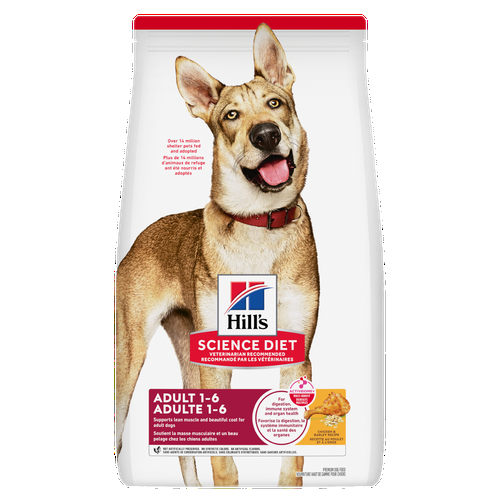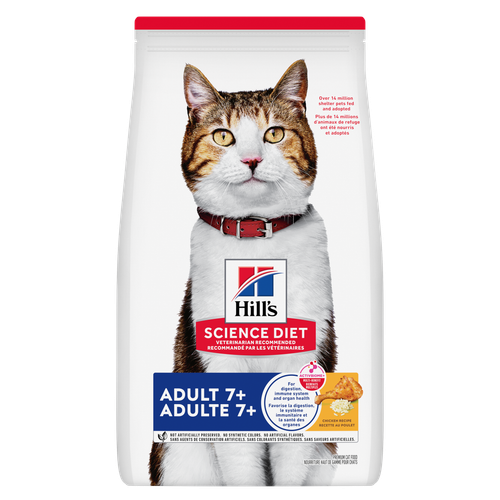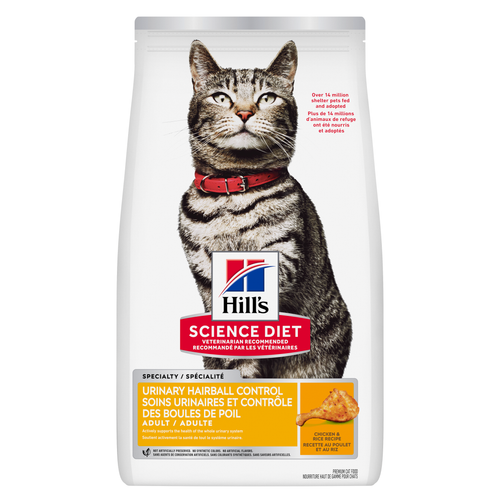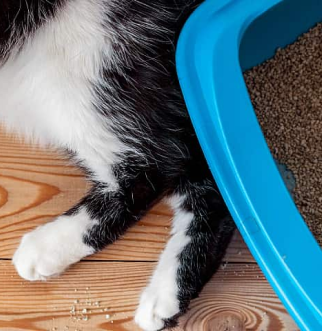
-
Find the right food for your petTake this quiz to see which food may be the best for your furry friend.Find the right food for your petTake this quiz to see which food may be the best for your furry friend.Featured products
 Adult 7+ Small & Mini Chicken & Brown Rice Recipe Dog Food
Adult 7+ Small & Mini Chicken & Brown Rice Recipe Dog FoodSupports energy level & luxurious coat in Small & Mini dogs. Helps keep immune system, heart & kidneys healthy.
Shop Now Adult Chicken & Barley Recipe Dog Food
Adult Chicken & Barley Recipe Dog FoodSupports healthy immune system, digestion, lean muscle & beautiful coat
Shop Now Adult Large Breed Chicken & Barley Recipe Dog Food
Adult Large Breed Chicken & Barley Recipe Dog FoodSupports healthy joints, immune system, digestion, lean muscle & beautiful coat
Shop NowFeatured products Adult 7+ Chicken Recipe Cat Food
Adult 7+ Chicken Recipe Cat FoodSupports energy level & beautiful fur. Helps keep immune system, heart & kidneys healthy.
Shop Now Adult Oral Care Chicken & Brown Rice Recipe Cat Food
Adult Oral Care Chicken & Brown Rice Recipe Cat FoodClinically proven kibble technology to reduce plaque & tartar build-up
Shop Now Adult Urinary Hairball Control Chicken & Rice Recipe Cat Food
Adult Urinary Hairball Control Chicken & Rice Recipe Cat FoodSupports the health of the whole urinary system with optimal levels of magnesium
Shop Now -
Dog
- Dog Tips & Articles
-
Health Category
- Weight
- Food & Environmental Sensitivities
- Urinary
- Digestive
- Joint
- Kidney
- Dental
- Cancer
-
Life Stage
- Puppy Nutrition
- Adult Nutrition
- Senior Nutrition
Cat- Cat Tips & Articles
-
Health Category
- Weight
- Skin & Food Sensitivities
- Urinary
- Digestive
- Kidney
- Dental
- Stress
- Cancer
-
Life Stage
- Kitten Nutrition
- Adult Nutrition
Featured articles The Incredible Science Behind Your Pet's Microbiome
The Incredible Science Behind Your Pet's MicrobiomeLearn what a pet's microbiome is, how it contributes to your pet's gut & overall health, and why nutrition is important in maintaining healthy microbiomes.
Read More Pet Food Storage Tips
Pet Food Storage TipsDiscover how and where to store your dry, as well as canned, dog and cat food. Learn how to find the "best before" dates on all Hill's pet food packaging.
Read More Compare Your Pet Food's Calories to Other Brands
Compare Your Pet Food's Calories to Other BrandsCompare Hill's Science Diet dog and cat food's calories against other pet food brands and AAFCO recommended maximum calorie count.
Read More -


As a cat parent, cleaning out the litter box may not be one of your favorite activities. But did you know that checking cat poop to ensure it's a normal color and shape is one of the most important things you can do to keep your feline friend healthy?
Most cats poop at least once a day, and cat stool is a great indicator of your kitty's state of health. It can tell you if they're experiencing a blockage or an underlying illness, or if their cat food isn't agreeing with them.
By familiarizing yourself with what "good poop" looks like, you can ensure that you're equipped to recognize when your cat's stool doesn't seem normal.
Healthy vs. Unhealthy Cat Poop: What to Look For
Healthy poop is generally malleable (like modeling clay: not too soft, not too hard) and shaped like a Tootsie Roll. This is considered the gold standard for poop: your kitty is passing stool normally. Healthy stool is dark brown in color, but not too dark, as blackish poop can mean blood in the stool. Poop that is too light also may indicate a more serious issue like liver disease as it can be an indication that there is complete obstruction of the bile duct.
Small, hard balls of poop are considered abnormal and unhealthy because they can be an indicator of constipation. This is a serious issue for cats because it may indicate problematic health concerns like neurological or metabolic conditions or a colon obstruction, notes International Cat Care. According to Wag!, the fact that your cat is constipated may also indicate that they are dehydrated. You should definitely call your veterinarian if your cat passes small, hard balls of stool.
You should also be on the lookout for soft or liquid-like stool that has no discernible shape. Cat diarrhea is caused by a variety of things, from bacterial infections to intestinal parasites to food intolerance. If you aren't looking closely, you may mistake liquid stool for urine. Make sure you always take a good, close look at what you're scooping or use a pair of disposable gloves to test the texture.
Not all unusual cat poop is cause for panic, but it does require careful observation. Your cat may have diarrhea for a day or two after a change in food or a stressful car trip, notes the Cornell Feline Health Center. But if this type of stool persists for more than two days or is accompanied by "poor appetite, lethargy, or vomiting," take your cat to the veterinarian immediately, says Cornell's Dr. Richard Goldstein. It's better to be on the safe side.


Tasty Tips
Healthy pets are happy pets, and no one is a better resource than your pet’s veterinarian.

Not all unusual cat poop is cause for panic, but it does require careful observation.
Preparing Cat Stool Samples
At each annual visit, your veterinarian will ask for a stool sample so the lab can perform tests on the fecal matter. Samples are best collected in approved plastic containers, which your veterinarian's office will provide. But you also can pick up a container at the office before your appointment, or purchase one online or at a pet supply store. Just remember: the lab will need a fresh sample, so it's important not to collect your treasure from the litter box until the day that you drop it off at the veterinarian. Once you scoop the fecal matter into the approved plastic sample container, refrigerate if possible and make sure to jot down the date and time of collection so the veterinarian's office has accurate information.
Multiple Cats, Multiple Checks
If you have more than one cat, you do not necessarily have to collect a sample from each individual animal unless your veterinarian specifically asks you to do so. If you find bloody stool, though, you'll probably have to be on litter box patrol to determine which cat may be experiencing a health issue. Of course, if one cat is ill, the others may be, too. If you notice an serious issue with one cat, isolate them with their own litter box and take to a veterinarian as soon as possible.
Believe it or not, your cat's stool can tell you a lot about their well-being. By incorporating a stool check into your daily litter box maintenance routine, you can help to keep them in tip-top shape and provide your cat with a clean, healthy environment.


Christine O'Brien is a writer, mom, and long-time cat parent whose two Russian Blues rule the house. Her work also appears in Care.com, What to Expect, and Fit Pregnancy, where she writes about pets, pregnancy, and family life. Find and follow her on Instagram and Twitter @brovelliobrien.

See what Vets have to say
Read reviews from the experts and see why Hill's is the #1 Veterinarian Recommended brand.
See what Vets have to say
Read reviews from the experts and see why Hill's is the #1 Veterinarian Recommended brand.



